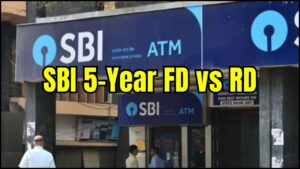
The Government of India has formally notified the rules for the Unified Pension Scheme (UPS), a retirement framework intended to replace the current system under the National Pension System (NPS). The Department of Pension and Pensioners’ Welfare (DoPPW) issued the notification on 24 January 2025, with the scheme becoming operational from 1 April 2025. The regulations set out eligibility, contribution structures, assured benefits, and the process for employees to opt into the scheme.
Who is Eligible for the Scheme
The UPS applies to three main groups of employees: those already enrolled in the NPS as of 1 April 2025, individuals joining central government service on or after the same date, and a category of retired NPS subscribers who meet specified conditions. The government has fixed 30 September 2025 as the deadline for eligible employees and retirees to exercise their option.
Officials said the move was intended to provide “certainty and predictability in retirement planning,” responding to years of debate over the adequacy of existing pension arrangements.
Key Pension Benefits and Payouts
Under the new framework, the UPS guarantees an assured pension of 50 per cent of the average basic pay drawn during the 12 months preceding retirement, provided the employee has completed 25 years of qualifying service. Employees retiring with fewer years of service will receive proportionate benefits.
For those with at least 10 years of service, a minimum pension of ₹10,000 per month is assured, subject to regular contributions and no premature withdrawals. Retirees will also be eligible for Dearness Relief (DR), mirroring the dearness allowance extended to serving employees.
The scheme provides a family pension equivalent to 60 per cent of the retiree’s assured pension. Additionally, at superannuation, employees are entitled to a lump sum benefit equal to one-tenth of monthly emoluments (Basic + DA) for every completed six months of service. This payout does not affect the assured pension.
Contribution Structure and Government Support
As with the NPS, employees must contribute 10 per cent of their Basic Pay and Dearness Allowance, matched by an equal contribution from the government. In addition, the government will provide a pooled contribution equivalent to about 8.5 per cent of salary to ensure the viability of assured benefits.
The Pension Fund Regulatory and Development Authority (PFRDA) will determine a benchmark corpus and default investment pattern. If an employee’s corpus exceeds this benchmark, the excess remains with them. If it falls short, employees may top up their contributions.
Switching Options and Limitations
The rules allow a one-time, one-way switch from UPS back to NPS. This option must be exercised at least one year before superannuation, or three months before the deemed date in cases of voluntary retirement. No switch from NPS to UPS will be permitted after the deadline.
The regulations also clarify procedures for handling delays in account registration, cases of death or disability, and situations involving disciplinary proceedings.
Coverage of Past Retirees
The UPS rules extend, with modifications, to retired NPS subscribers. Past retirees will be eligible for arrears with interest at the Public Provident Fund (PPF) rate, along with monthly “top-up” payments after adjusting for earlier withdrawals and annuity payments.
Broader Context
India’s pension reforms have been a source of contention between the Centre, states, and employees’ unions. While some states have reverted to the Old Pension Scheme (OPS), the UPS seeks to address concerns about retirement security while maintaining fiscal discipline.
Economists note that by combining elements of a defined benefit and defined contribution model, the UPS attempts to strike a balance between predictability for employees and sustainability for government finances.
EPFO 3.0 Update: These New Game-Changing Services Will Be Available for All Members
Conclusion
The Unified Pension Scheme represents a major shift in India’s retirement landscape. By providing an assured pension along with defined contribution elements, the government aims to strengthen financial security for central government employees, while retaining flexibility and fiscal oversight. The coming months will show how many employees choose to opt in before the September deadline.
















